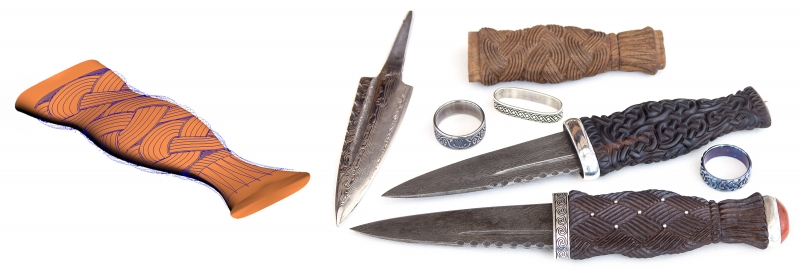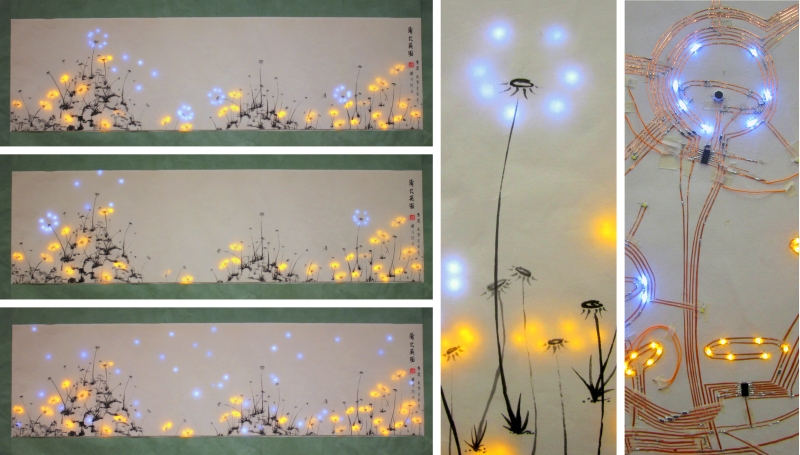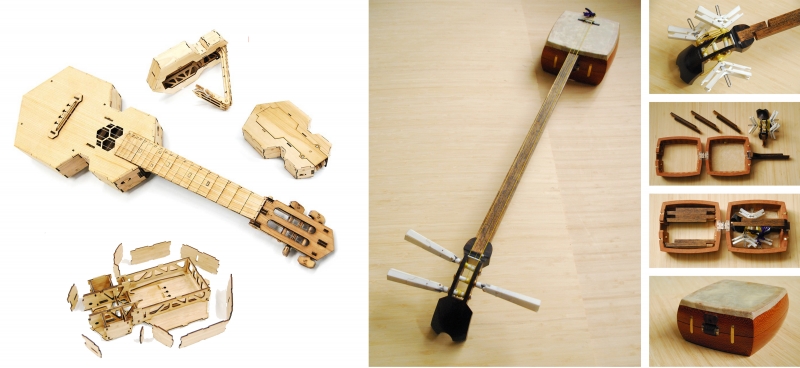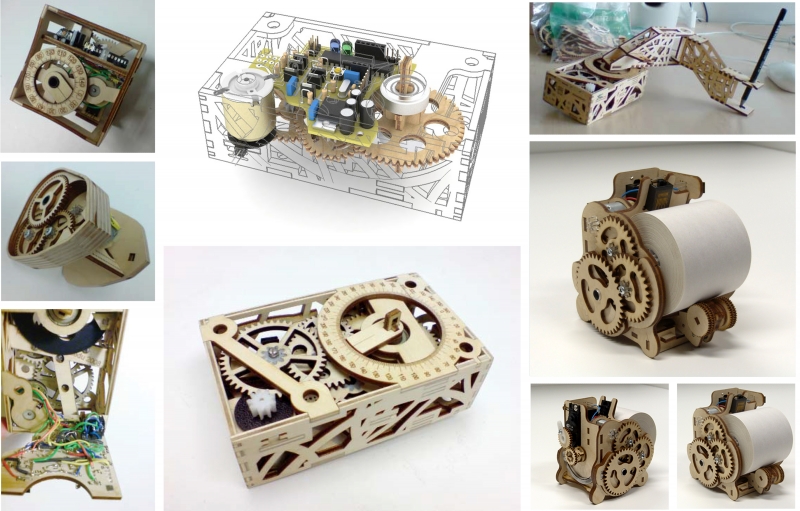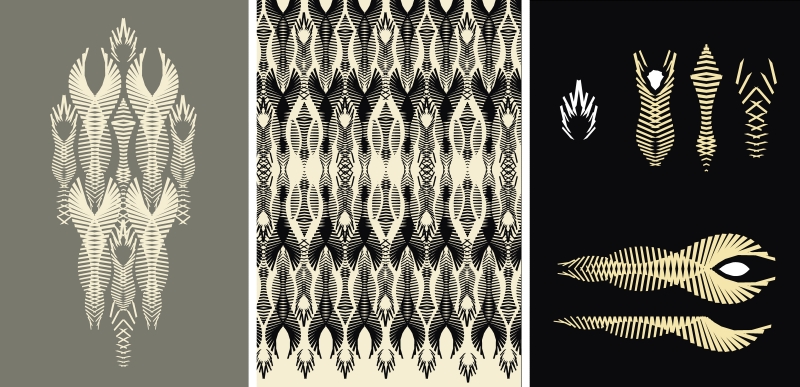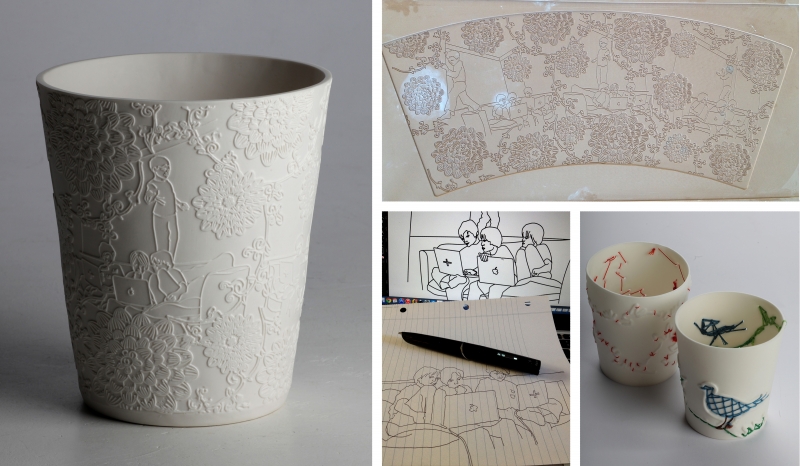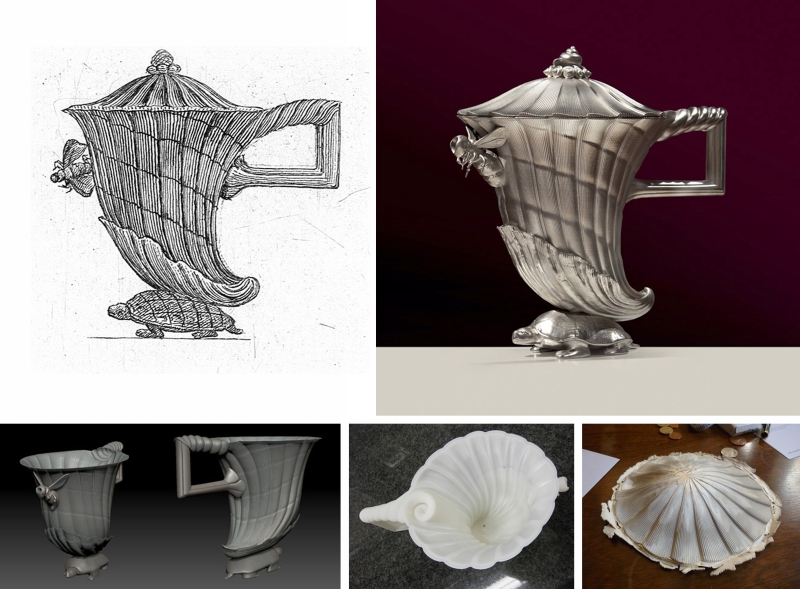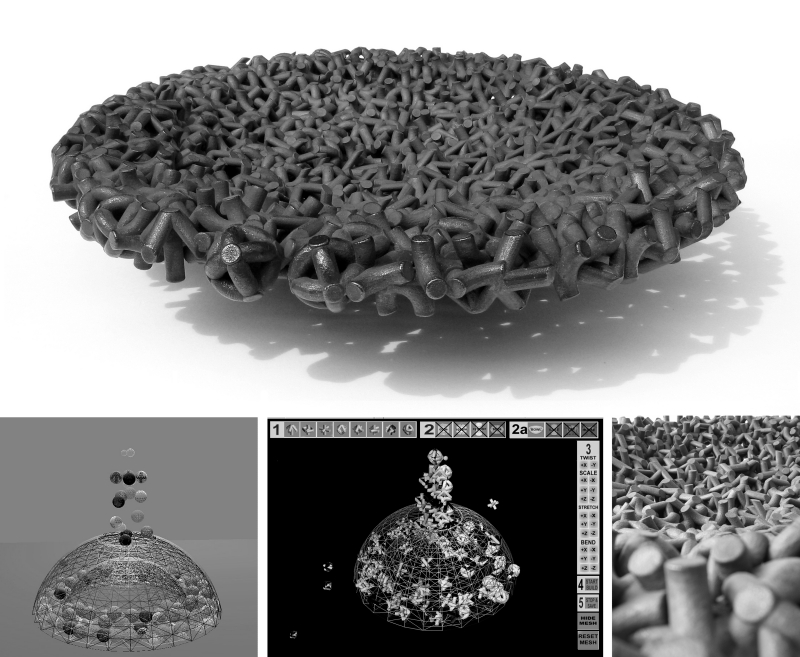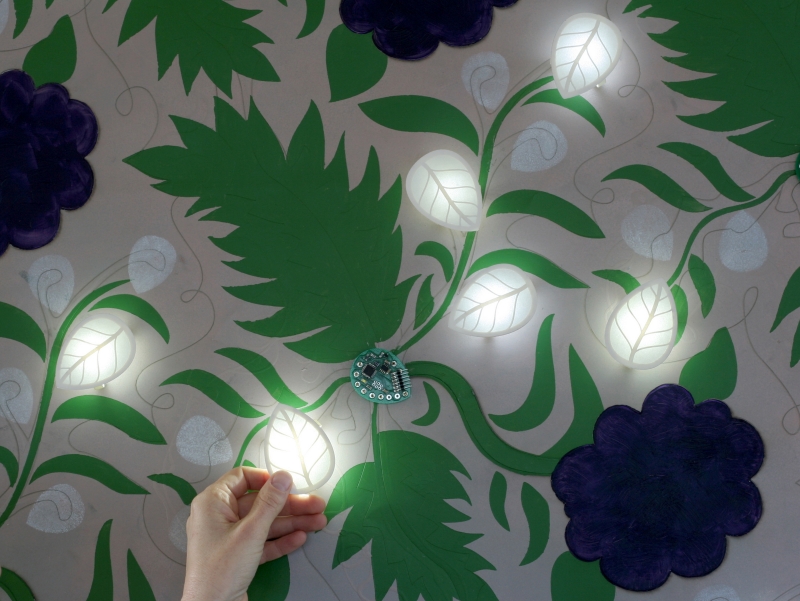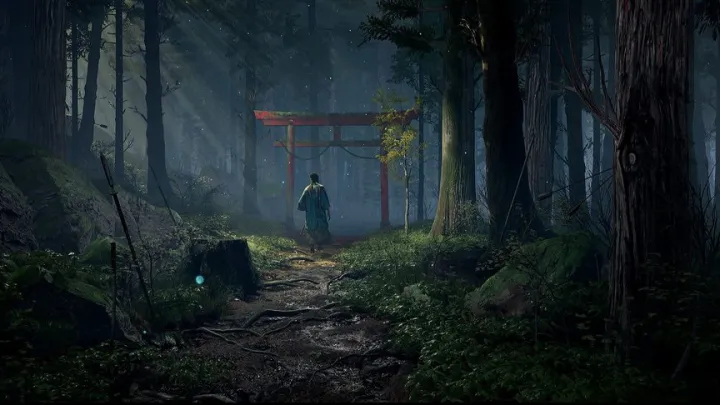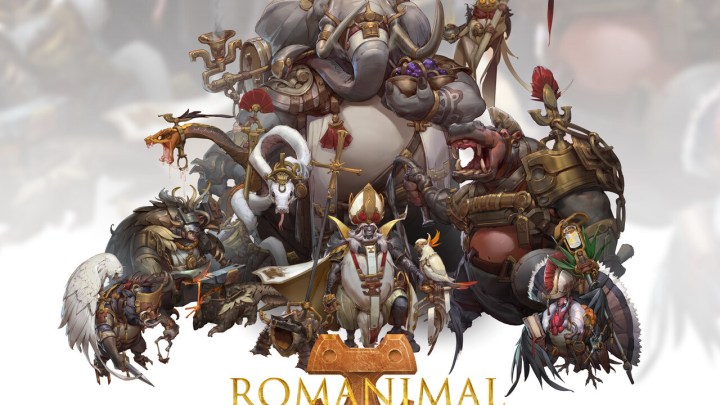SIGGRAPH 2015 Art Gallery: Hybrid Craft
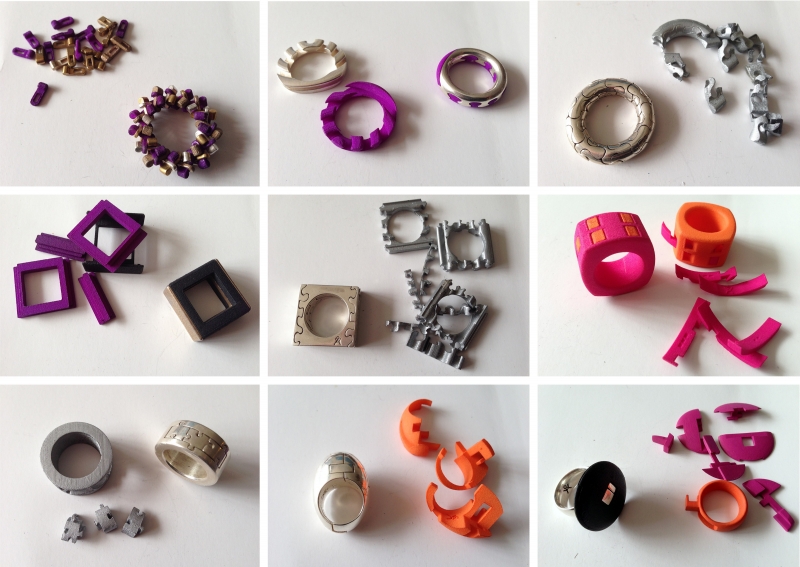
“Digital design and fabrication technologies are no longer a theoretical promise,” said Amit Zoran, Program Chair of the Art Gallery at SIGGRAPH 2015. He refers to 3D printing and other new practices and methods that have become more prevalent, and widely utilized, by skilled makers and artists.
At SIGGRAPH 2015, Hybrid Craft, which is the main theme of the Art Gallery Program, is an exhibition that showcases craft techniques and values in contemporary digital design. This curated show will feature fifteen works of art from skilled makers who use computational design tools, integrating advanced technologies with traditional making processes.
Dr. Amit Zoran is a researcher, educator and the SIGGRAPH 2015 Art Gallery program chair. He created the theme “Hybrid Craft” as a venue for technology and craft to co-exist and be presented.
He is a Senior Lecturer at the School of Engineering and Computer Science at the Hebrew University. He holds a Ph.D. and a M.S. in Media Arts and Science from the MIT Media Lab, a M.Des. in product design from Bezalel, and a B.Sc. in Communication System Engineering from Ben-Gurion University, Israel. Specializing in digital signal processing, he previously worked 6 years as a DSP engineer and signal-process algorithms developer for companies in the Israeli high-tech industry. In his work, Dr. Zoran explores the two divergent realms of emerging computational technologies and traditional hand-hewn skills. He wishes to develop a new way of thinking about these polarities: the digital machine, as generator of control and efficacy, and the human hand, as preserver of subjective intentions and expressivity.
“SIGGRAPH 2015 is the perfect setting for showing the 15 works of some of the great skilled makers and artists out there. The showcase emphasizes the importance of craft heritage in contemporary digital design, where beautiful and meaningful artifacts are produced by a machine and craft-person working together, not by a machine or craft-person alone,” Zoran shares.
Dr. Zoran explains that Hybrid Craft exhibition goes hand-in-hand with the overarching theme of SIGGRAPH 2015, Xroads of Discovery, which emphasizes the collaboration of individuals, interests, identities, disciplines and perspectives in arts, graphics and emerging technologies. In the case of Hybrid craft, the focus is multi-directional as the new and traditional come together.
“As a hybrid maker myself, I am always amazed and impressed at the wide range of creative methods that makers incorporate in their artwork. To merge digital making technologies with traditional ones is inspiring. These artists integrate tools, techniques and materials from a variety of sources and create amazing works of art,” continues Zoran.
When curating the art pieces for the Hybrid Craft exhibits, Dr. Zoran looked for a wide range of professional backgrounds, which included independent makers, students and teachers, as well as designers associated with research institutes and commercial organizations; each one able to show in their pieces the integration and digital creative practices and traditional craft.
Dr. Zoran tells us that inspiration to curate these pieces was drawn from master makers’ abilities to use technology as part of their creative palate while integrating computationally enabled designs and object with traditional crafts, such as 3D printing technologies to make jewelry, models or artworks or embedding computational and electronic interaction capabilities into their designs.
The showcased artworks in the Hybrid Craft exhibition include:
Friedman explores the world of toys by combining 3D-printed puzzles with wearable jewelry to create puzzle rings. She uses Laser Sintered (SLS) printed nylon or 3D-printed wax and casting and each ring is constructed and assembled in a different manner. The pieces that are not only meant to be seen but also to be touched and played.
Brian Chan creates animal models printed in one pass, with integral joints allowing lifelike motion. They are modeled from scratch, not 3D-scanned, and printed in Shapeways SLS nylon.
Rab Gordon, a full-time knife-maker from Scotland, uses CAD, computer-aided manufacturing (CAM), and CNC in the non-industrial setting of bespoke knifemaking. In addition, Gordon incorporates and creates traditional Celtic craft values with digital technology through specialist software (CNC Toolkit), machines, and methods.
The Dandelion Diptych by Jie Qi explores the relationship between physical painting with ink on paper and digital painting with LEDs controlled by code, and the handcrafted circuitry that connect the two. This piece is made up of two interactive paintings of dandelions, one reflecting reality and the other inverting it. Viewers blow on the work to activate it.
The main idea behind Folding Musical Instruments by Brian Chan is that is that these were designed so that a musician is able to travel with them while continuing to practice and perform. These instruments are designed so that most of the components can be produced with digital fabrication tools, such as the laser-cut folding ukulele or the CNC-milled ultra-compact shamisen.
In Hunt for Butterflies, Schmitt, a Boston-based German artist and robocist, explores the relationship between organic forms and digital fabrication. He uses CAD, CNC machine tools, wood, plastic, metal, electronics, and mechanics to “explore the question of how computational methods, machine tools, and fabrication resources can be used outside the paradigm of application, function, purpose, and profit… What would a machine look like and how would it move if it is made as an artistic expression in a culturally relevant context rather than a purely economic one?” (Peter Schmitt)
In this project, Brosh aims to reinvent the way bicycle frames are fabricated by using 3D printing to enable new construction solutions. This comprehensive bicycle-frame building kit, not only uses 3D printed parts but also a diverse collection of materials such as aluminum, bamboo, and recycled fibers to reinforce connectors.
Jennifer Jacobs combines drawing, programming and making in Line Number to create patterns for the Hybrid Craft exhibition’s walls and pedestals by using a parametric design tool. A series of these forms is then translated to wooden panels using CNC-milling techniques.
In Minecrafting, Bunnell, a ceramic designer, draws upon traditional Chinese ceramic surface patterns and narrative compositions, rendering scenes of contemporary family life in low relief amongst stylized chrysanthemums. The piece combines digital design and production methods with hand drawing, traditional slip casting, and hand-building processes for high-fired porcelain.
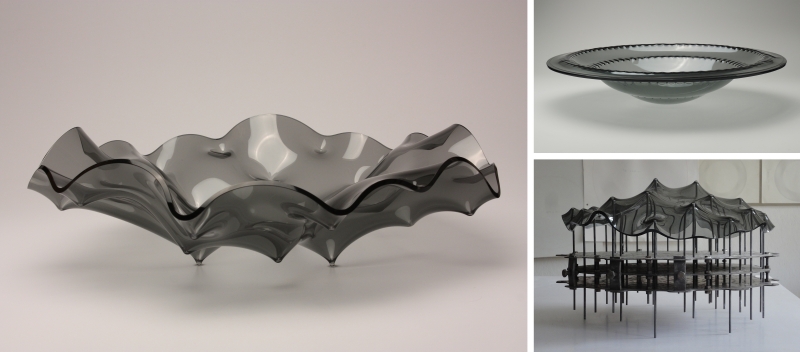
Neo-Industrial Biography, Glass Working and Re-Configurable Toolmaking
Tavs Jorgensen, Autonomatic Research Group
In this project, Jorgensen developed tooling systems based on the concept of Reconfigurable Pin Tooling (RPT). Using a free-fall slumping technique, the artist created a bowl by heating glass disks and letting gravity force the glass against pins positioned in a matrix of holes in the tooling device. The tooling systems in this project were developed almost entirely with digital design tools, while the actual use of the final system is completely analog.
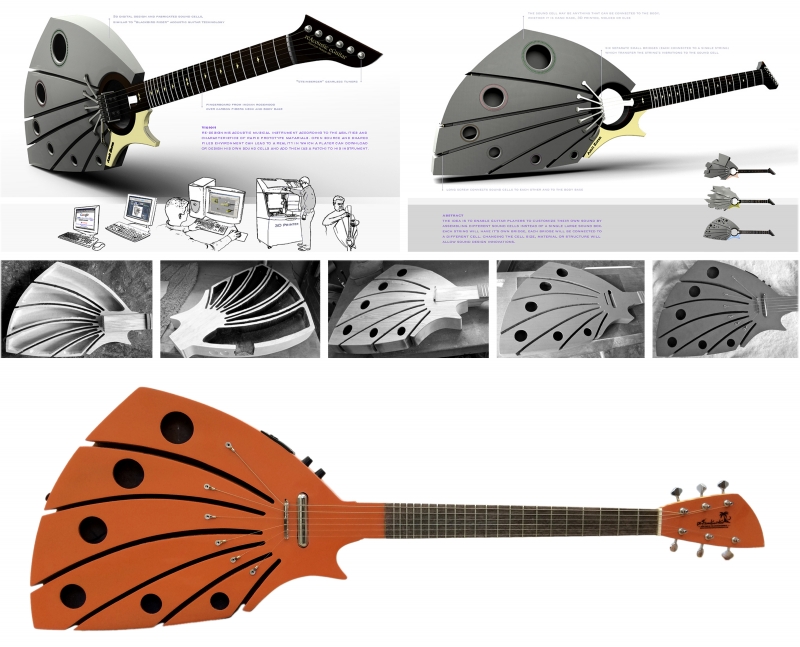
The Other Way Around: From Virtual to Physical
Amit Zoran, The Hebrew University of Jerusalem and Seppo Valjakka, Independent Artist
The reAcoustic eGuitar is a futuristic 3D-printed guitar presented at SIGGRAPH 2008. In 2013, after reading about it online, Seppo Valjakka crafted a wooden instrument based on this 3D-printed guitar concept.
Factum Arte used digital tools to realize work in 2010 that Giovanni Battista Piranesi designed between 1760 and 1770. The objects were digitally modelled using ZBrush (by Adam Lowe with Voxel Studio, Madrid), 3D-printed in high detailed stereolighography at Materialise, and then made in cast, hand-chased, and polished. This collection shows a high degree of precise and complex modeling, with CAD and 3D printing being used as stepping stones for the final artifact.
This copper-electroplated SLS nylon bowl is a digital one-off created with Automake, bespoke generative-design software that Marshall co-created. It was achieved by creating form-building software that combined user input with some limiting design parameters, as well as opportunities for unique and uncontrolled outcomes produced by generative algorithms.
Hope sculpts structure virtually, using Python scripts that automate alternative derivations algorithmically. In Species-Tool-Beings (3D-printed PLA molecular models and paint on panel 24 x 24 x 2 inches), the artist relies on modified molecular-modeling software and DIY 3D printers.
This is part of a series that explores how unique wallpapers—decorative and interactive—can be constructed from thin, flexible electronics. Buechley is a designer, engineer, artist, and educator whose work explores intersections and juxtapositions of “high” and “low” technologies, new and ancient materials, and masculine and feminine making traditions.
About SIGGRAPH
SIGGRAPH is the world’s largest conference on computer graphics. It takes place once a year in a city somewhere in the U.S. or Canada, and is attended by tens of thousands of computer graphics professionals. SIGGRAPH 2015 will be held from August 9 through August 13 at the Los Angeles Convention Center in Los Angeles, California.
SIGGRAPH is one of the most highly respected venues for the presentation of new computer graphics technology and research.
For more information about SIGGRAPH 2015, go to http://s2015.siggraph.org/.


